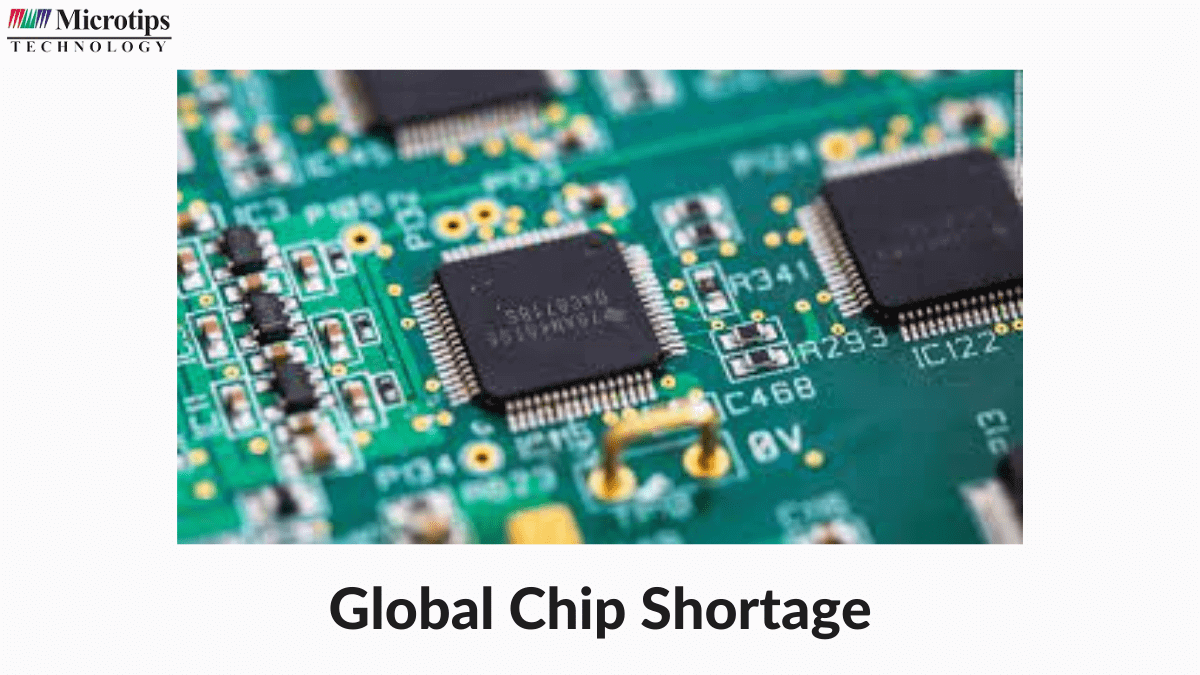Did you ever think that there would be a global chip shortage in a period when more than half of the world relies on electronic devices? But, it is there. As the world moves towards getting rid of lock down and other adversities caused by the COVID-19 pandemic, we are now confronted by a new crisis.
So, how did it happen?
A chip is the mind of any electronic device. And, the reason for its shortage, soon to be reaching the crisis point, is another example of industrial breakdown.
Apple, one of the world’s largest smart device manufacturers, delayed the launch of the iPhone 12 due to a ‘temporarily constrained’ supply chain.
While most of the business leaders are anticipating the shortage to take years to fulfill the demands, Tesla CEO Elon Musk calls the global shortage of chips a ‘short-term’ problem.
Let us now understand the answers to some burning questions.
Why Is There a Global Chip Shortage?
The global chip shortage is an outcome of an imbalance in the supply chain system. When the production factories and companies locked down, automotive companies pulled back their demands of chips. The chips they had ordered went to other industries. When companies restart their production, they face a slowed-down production of chips.
It did not happen only with the automotive sector but also with smart device manufacturers ever since many people started working from home.
How is Global Chip Shortage Affecting the Economy?
The semiconductor market has grown by leaps and bounds through the years. That is because of the large adoption of electronic pieces of equipment in all industries.
A prolonged shortage of chips is already affecting companies like Apple and Samsung, where they have to delay the release of their new launches.
Prominent car manufacturers including Volkswagen, Ford, Renault, Nissan, and Jaguar Land Rover are facing serious delays in their production and delivery system. These car manufacturers use these chips to build digital speedometers, video monitors, infotainment systems, navigation systems, airbag systems, and other components.
As per a report released by Deloitte, the cost contribution of automotive electronics and semiconductor
content per car has hiked potentially through the years.
Let us have a look at this table here.
The very same reports also indicate the rising revenues of the automotive semiconductor industry staggeringly.
It becomes evident to witness a significant impact of this global chip shortage on the global economy via industrial sectors such as automotive, smartphones, entertainment, healthcare, and others.
How is Chip Shortage Affecting the LCD Market?
The very first indication of the severe impacts caused by chip shortage is the increasing costs of LCD devices. Companies, where there are devices manufactured using LCDs, are pulling back their production and focusing on alternate products.
Many LCD device manufacturers now have to close down their businesses temporarily.
Some business bodies are appealing to the governments for waiving off some taxes or subsidizing the production of LCDs by the time things get normal in the chip supply system.
How and When Will the Chip Shortage End?
In March 2021, Intel announced that it would invest 20 billion US dollars in sustaining its focus on product manufacturing. The organization also sighted companies like Amazon, Microsoft, Google and Qualcomm can be future customers. It also cited national security objectives where it indicated that the extension of its facilities would increase America’s competitiveness and also support US government initiatives.
Elon Musk’s anticipation of believing that it is a short-term problem was mainly because many foundries or manufacturing companies have or will soon become online, which will support the supply chain system.
However, some experts believe that it may take at least two years to create a structure that will maintain the high imbalance in the supply-demand ratio today. Many also indicate that things can become under control by Q2 of 2022.
The Final Words
Chip shortage can increase the costs of all electronic equipment in the upcoming times. It is up to both the corporate and the governments to engage in better communication to keep things a bit easier for them.
Leading IC vendors in Taiwan and China are forced to hike the prices in Q4 of 2021 after paying increased costs of foundry and materials. The labor shortage in an age of high demands and low supplies is another challenge faced by electronic component manufacturers.
Amid the crisis, a few manufacturers are trying hard to counter the challenges with a fore thoughtful material management approach.
Microtips Technology, a US-based electronic component manufacturer and distributor, is proactively working with their customers to meet the demands throughout 2022 by;
- Evaluating demand and lead time
- Analyzing costs and material availability
- Investing in the supply chain to secure better pricing and material allocation
- Redesigning material if needed to source from multiple suppliers
- Ensuring our customers avoid interruption in their product supply.

